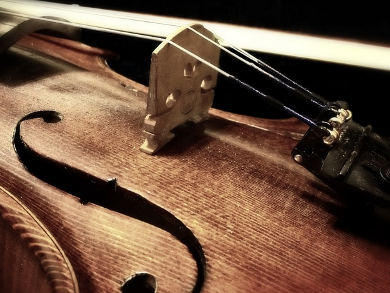Hwan-Ching Tai, National University of Taiwan, Taipei, and colleagues have studied wood samples from three Stradivari violins, a Stradivari cello, and a violin by Guiseppe Guarneri with five different chemical analysis methods. They compared the results with wood samples of modern violins and maple wood and found fundamental differences.
The wood of the Stradivari must have undergone a mineral pretreatment. It was impregnated with a solution containing aluminum, copper, and other metals. Even at Stradivari and Guarneris time, however, this very elaborate and risky mineral treatment was uncommon outside Cremonas, Italy.
Moreover, over the centuries, about one-third of the hemicellulose has decayed in the violin and the lignin has been partially oxidized. The cellulose, on the other hand, remained intact – and still lends the Stradivari their stability. The researchers also observed that the bonds between the cellulose and the lignin are loosened. This wood condition resembles that of a mushroom attack. However, the researchers believed that it is achieved by mechanical relaxation through the centuries-long vibrations while playing music. Even a few hours of vibration can reduce the internal friction of wood by rearranging hydrogen bonds and polymer chains, according to the researchers.
The extent to which the individual effects contribute to the unique sound of the Stradivari must be studied more precisely. This could provide valuable information for building instruments.
- Chemical distinctions between Stradivari’s maple and modern tonewood,
Hwan-Ching Tai, Guo-Chian Li, Shing-Jong Huang, Chang-Ruei Jhu, Jen-Hsuan Chung, Bo Y. Wang, Chia-Shuo Hsu, Brigitte Brandmair, Dai-Ting Chung, Hao Ming Chen,Jerry Chun Chung Chan,
Proc. Nat. Acad. Sci. 2016.
DOI: 10.1073/pnas.1611253114
Also of Interest
- Chemical Secrets of the Violin Virtuosi,
Klaus Roth,
ChemViews Mag. 2012.
DOI: 10.1002/chemv.201200076What made Stradivari’s violins so special? Klaus Roth looks at the important role of chemistry in Stradivari’s workshop and instruments


